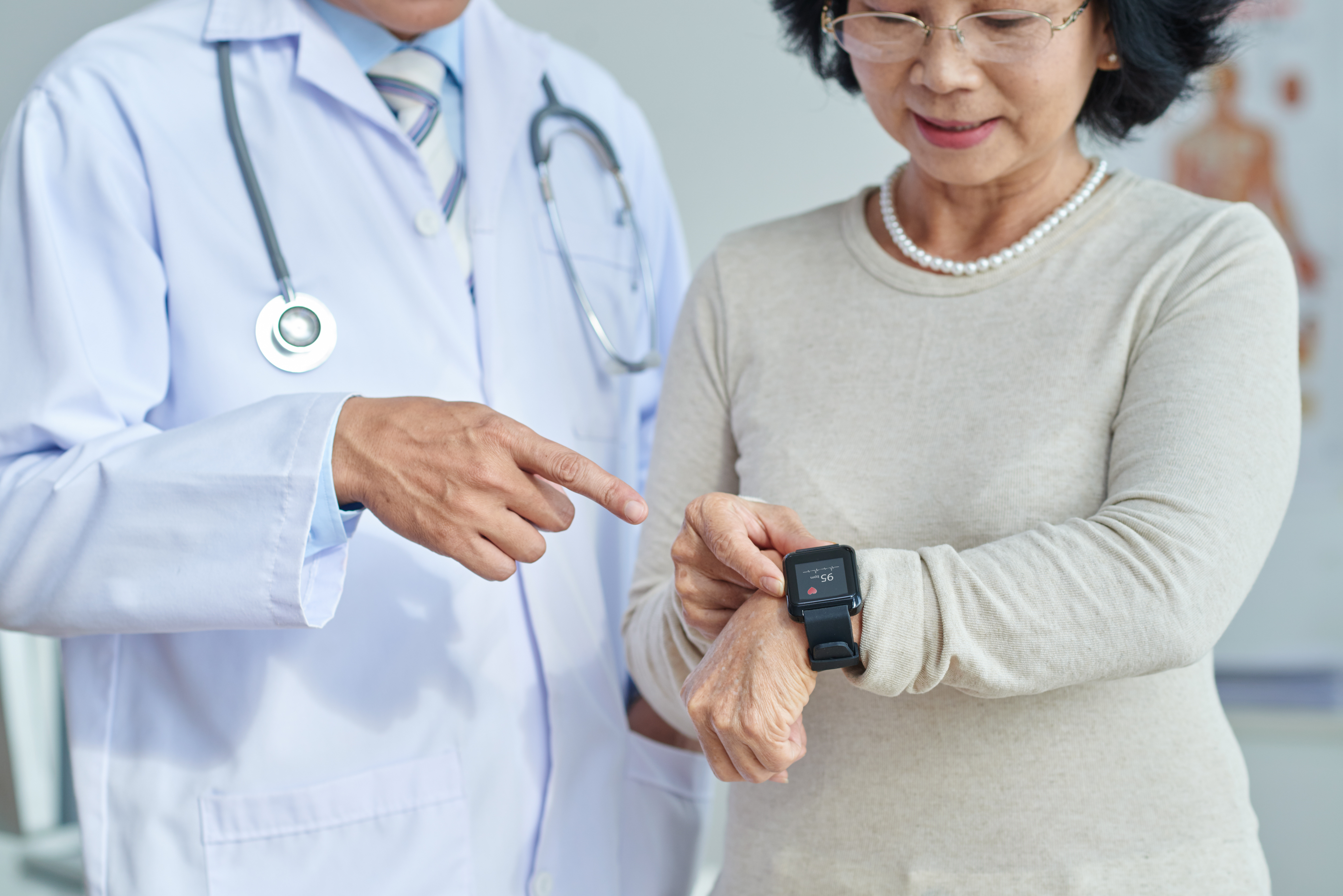
Patient Generated Health Data (PGHD) Frameworks, Regulations, and Requirements for Healthcare Stakeholders
January 22, 2020
Appropriate PGHD Frameworks Need to Be Put in Place to Ensure Healthcare Stakeholders Comply with Regulatory Requirement
The healthcare landscape is changing. Patients are becoming much more interested and invested in their health and care decisions, and their voices and experiences are more important than ever before. Regulators are requiring and/or incentivising the inclusion of the patient’s voice in care delivery. Healthcare providers are increasingly being required to put the patient at the centre of the care they provide, and all healthcare stakeholders must find ways of incorporating the patient’s perspective into their care setting. Healthcare is moving towards what it should have always been about, the patients.
Healthcare Technology and the Rise in Patient Generated Health Data
Facilitated by an explosion in the use of healthcare technology, patients nowadays can collect and keep track of a variety of health indicators such as fitness levels, dietary factors, symptoms, and treatment history, which they can share with their healthcare providers. This patient generated health data has the potential to transform health systems, improving the quality of care and patient outcomes. Patient generated health data (PGHD) as defined by the Office of the National Coordinator for Health Information Technology (ONC) is “health-related data created, recorded, or gathered by or from patients (or family members or other caregivers) to help address a health concern.”
“There are over 318,000 mobile applications available to consumers and more than 340 consumer wearable devices on the market worldwide.”
–IQVIA Institute for Human Data Science Report
While PGHD has long been a part of healthcare in ways such as patients keeping track of their weight on paper or telling their providers about their symptoms, the significant increase being seen in the collection of PGHD is due largely to innovative digital health technologies such as wearables, which have become more popular and affordable. Consumer level devices such as the Fitbit and Smart Monitor’s InspyreTM; mobile health (mHealth) applications; and registered medical devices such as blood glucose monitors and interactive weight scales, are all giving the patient the power to easily collect and share their PGHD.
Benefits of Collecting and Sharing Patient Generated Health Data
When combined with existing clinical data, PGHD helps to provide a more fulsome picture of the health of the patient in the everyday environment outside of the care setting, which can be used to better inform care decisions. The collection and sharing of PGHD has benefits for the patient, the provider, and all healthcare stakeholders. These benefits include:
- Better disease management, especially for chronic conditions
- Improved patient outcomes through more timely diagnosis, proactive monitoring of changes in routine, and identification of conditions before they get worse
- Reduced costs due to fewer hospital admissions and readmissions as a result of earlier treatment interventions
- Decreased penalties from lower readmission rates
- Increased patient engagement
- Compliance with federal regulations requiring the incorporation of PGHD in electronic health records (EHRs)
- Improvements in the healthcare system through big data analytics
Leveraging PGHD can change the digital health game, improving analytics and reducing costs.
Challenges to the Collection and Use of Patient Generated Health Data
Despite the many significant benefits to be derived from collecting and using PGHD, it is not without challenges. The ONC in its whitepaper Conceptualizing a Data Infrastructure for theCapture, Use, and Sharing of Patient-GeneratedHealth Data in Care Delivery and Researchthrough 2024, shares some challenges that may be faced by patients, providers, and healthcare systems:
- Patients may not understand the advantages to be had in capturing and sharing their PGHD with providers and researchers
- Patients have different levels of health and technology literacy
- Data privacy and security concerns
- Lack of technical infrastructure, workforce capacity, and training in the healthcare system to adequately manage the intake and analysis of the large volumes of PGHD
- Confirming the validity and accuracy of the PGHD generated by varying devices
Notwithstanding these challenges, the potential and opportunities presented by the proper collection, handling, and use of PGHD in improving care and reducing costs, necessitate the development and implementation of proper frameworks to ensure that PGHD are utilized properly and healthcare stakeholders comply with requisite regulations while incorporating PGHD in their operations.
Proper Frameworks are Critical for Collecting, Storing, and Utilizing Patient Generated Health Data
PGHD are everywhere in the healthcare space. Numerous devices and mHealth applications abound that allow for collecting, storing, and sharing PGHD. Almost all patients are collecting PGHD in some form resulting in large volumes of data. Proper healthcare data management now becomes critical as without this, things get chaotic and the data can become useless. Additionally, data privacy and security issues can lead to non-compliance with regulations and fines. Some pertinent questions to be asked include when seeking to capture and utilize PGHD include:
- How do we properly collect all this data?
- How do we ensure the accuracy of the data being collected?
- How can we separate data that are useful from those that are not?
- How can we turn the raw data into useful information that can guide care decisions?
- Where will all this data be stored? Do we have the capability to store large amounts of data?
- What privacy and security measures do we need to put in place?
- Can PGHD be incorporated into our EHRs?
- How do we ensure that we properly handle and utilize PGHD such that we remain in compliance with relevant regulations?
When developing frameworks for the capture, sharing, and use of PGHD, it is critical to ascertain what federal, state, or organizational laws and regulations are relevant to the process to avoid non-compliance
All these questions can be answered with a proper framework in place. Stemming from two pilot demonstrations to test some concepts on the use of PGHD in real-life situations, the ONC has prepared a practical guide offering best practices and questions to consider when developing a policy framework for capturing, using, and sharing PGHD in clinical and research settings. The guide suggests that healthcare stakeholders should consider the following four areas:
- Strategic planning: this includes determining the priorities and objectives of the organization, assessing the business case, and securing executive sponsorship and enlisting support at all levels
- Defining requirements: identifying patient-facing technologies is covered in this section
- Implementation: this incorporates training staff, recruiting and enrolling patients, and reviewing and acting on the PGHD collected
- Monitoring and adapting: understanding and adhering to relevant privacy and security laws and regulations is one area should be looked at in this section
Following these steps will help to ensure that a proper structure is in place for leveraging PGHD while remaining compliant with regulations.
Regulations and Requirements on PGHD for Healthcare Stakeholders
One of the main concerns with the capture, sharing, anduse of PGHD, and which has the potential to cause violations to regulations, is privacy and security of the data. The Health Insurance Portability and Accountability Act (HIPAA) Privacy Rule, while not necessarily specific to PGHD, aims to “assure that individuals’ health information is properly protected while allowing the flow of health information needed to provide and promote high quality health care and to protect the public’s health and well being.” This would mean that once a patient shares their PGHD with a healthcare provider or entity covered by HIPAA, it becomes protected under HIPAA and the healthcare organization becomes responsible for protecting the patient’s information. Any violations of HIPAA can lead to costly fines.
The Centers for Medicare and Medicaid Services (CMS), through the Medicare Access and CHIP Reauthorization Act of 2015 (MACRA), requires that healthcare providers integrate PGHD into EHRs using Certified Electronic Health Record Technology (CEHRT).
“For 2020, eligible hospitals, critical access hospitals, and dual-eligible hospitals will have to report to CMS on health information exchange and provider to patient exchange, among other objectives.”
–CMS
The Food and Drug Administration (FDA) regulates certain devices and mobile applications and in September 2019, issued a Policy for Device Software Functionsand Mobile Medical Applications to clarify what is regulated. Healthcare stakeholders need to be aware of such policies to ensure they do not inadvertently violate FDA regulations.
There are also regulations that incentivize the use of PGHD and healthcare stakeholders can benefit from leveraging PGHD in their operations. The CMS operates the Promoting Interoperability Program (Meaningful Use) (previously the EHR Incentive Program) which pays eligible professionals, eligible hospitals, and critical access hospitals (CAHs) for meeting a set of standards for the use of CEHRT as part of their practices. Included in this are incentives for incorporating PGHD or data from a non-clinical setting into healthcare operations.
PGHD, spurred by rapidly evolving healthcare technology, is transforming the healthcare sector. There are many benefits to be realized from healthcare stakeholders working with patients to leverage this data, making it work for the patient, theprovider, and the health system. However, there are also challenges, especially regarding data accuracy, security, and privacy. The large volumes of PGHD being collected by the myriad of devices and mHealth apps available, combined with the need to protect the privacy and security of the patient’s data, make it critical to develop a proper framework for any system being implemented to collect, share, and use PGHD. When developing such a framework, be sure to carry out a check of any regulations or requirement that may impact the collection, sharing, and use of PGHD to ensure compliance.
